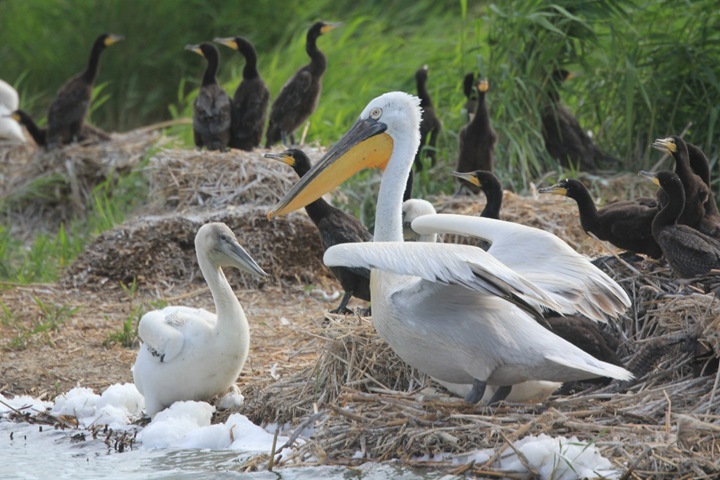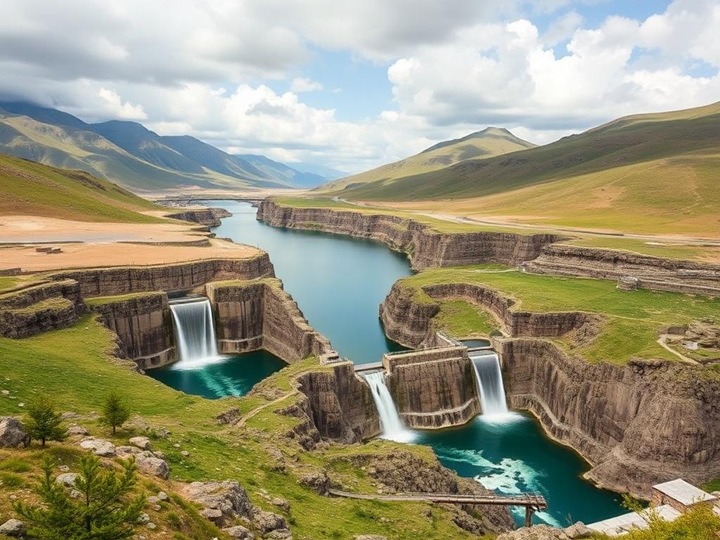Man versus birds: how dams disrupt ecosystems in Southern Siberia
Human intervention, especially the construction of dams on rivers, causes a tangible and often irreparable blow to the bird populations of the Omsk region. This alarming trend, supported by decades of observations, was voiced by Professor Sergei Alexandrovich Solovyov during his public lecture at the Omsk State Regional Scientific Library named after A.S. Pushkin. The event, timed to coincide with the International Day of Birds, became a platform for a serious conversation about the anthropogenic transformation of the avifauna of the Omsk Irtysh region – changes caused by human activity.

The richest water lands of the Omsk region – an extensive network of rivers, lakes and marshes – have long served as a home and an important transshipment point for many waterfowl and near-water birds. Nature itself has created unique conditions here. The mighty Irtysh carries its waters through 13 districts of the Omsk region for 1132 kilometers. More than four thousand rivers flow into its basin, the total length of which reaches almost 19 thousand kilometers, although most of them are small rivers and streams. About 16 thousand lakes complete the picture. This water maze is the basis of the biodiversity of the region, especially for birds.
Sergey Alexandrovich Soloviev, Doctor of Biological Sciences, an authoritative scientist from the Institute of Animal Systematics and Ecology SB RAS (Novosibirsk), professor at leading Novosibirsk universities, shared a deep analysis of the changes taking place. In his speech, he stressed that the key factor changing the appearance of the water resources of the Irtysh region and, as a result, affecting the life of birds is the purposeful creation of hydraulic structures on rivers by man.
“We have been conducting a study of the avifauna of the Omsk Irtysh region since 1973 in summer and winter,” said Professor Solovyov, emphasizing the duration and systematic nature of the work. “From 1986 to 2024, we have identified 44 bird habitats – in the Ishim, Barabinsk forest-steppe zones, the southwestern part of Western Siberia, and northern Kazakhstan. Along with our own accounting data, we also included analyses of materials and characteristics of the bird population in 450 habitats. This includes bird routes in the first half of summer with a length of 5780 kilometers, as well as in winter. Accounting is carried out from May 31 to August 31. They are held once every 15 days at the same selected site. According to them, we determine the change in the dynamics of bird life. What else is the work of zoological monitoring valuable? We can use it to analyze the bird population materials that were made several years ago.” This painstaking work allows not only to record changes, but also to understand their underlying causes and long-term consequences for fragile ecosystems.
Researchers rely on an extensive collective database, access to which, however, is provided only to experienced scientists whose qualifications are confirmed by field work and scientific publications. This ensures the reliability and scientific rigor of the analysis. “Along with the fact that we are exploring floodplain landscapes – forest, field, meadow, swampy, we are also analyzing watercourses, which are very important. They are migration channels through which birds migrate in spring and autumn. We are also analyzing hydraulic structures on the Ishim, Tobol, Irtysh and Osh rivers,” Sergei Solovyov explained, pointing to an integrated approach to studying the problem.
Of particular concern is the situation on the Osha River, a left tributary of the Irtysh with a length of 530 kilometers. In recent years, its channel in the Krutinsky and Tyukalinsky districts has been actively blocked by hydraulic structures, often erected artistically and without taking into account environmental consequences. Professor Solovyov showed photographs of such objects: rough earthen embankments with pipes, probably built for the needs of a local farmer instead of a bridge near the village of Kumyra, or a bridge with valves near the village of Ust-Logatka, erected by entrepreneurs, obviously in pursuit of profit.
The consequences of such a thoughtless intervention turned out to be catastrophic. The valves on the bridge at Ust-Logatka prevented the natural flow of water in Osh. “That year we could not find the owner of this building,” the scientist noted bitterly. “It led to the fact that the water level rose in Lake Tenis, and decreased in the Osha River. And it was just necessary to open the valves and dump the water from Lake Tenis, but for some reason no one wanted to do that.” As a result of this inaction, islands – traditional nesting sites for pelicans and cormorants – were flooded or washed away by waves. The birds have lost their home.
The environmental drama did not end there. In the struggle for the remaining nesting territories, pelicans began to displace cormorants closer to the shoreline of the lake. This decision turned out to be fatal for the cormorant chicks. “There are American minks near the coastline. They staged a hunt for cormorant chicks,” said Sergei Solovyov. “The minks brought their broods, which trained on chicks. During the ringing, we found a lot of dead chicks.” There was also a change in the behavior of the surviving cormorant chicks: usually friendly, they began to show aggression, probably due to constant fear of predators.
Only after a long eight years, after the intervention of the prosecutor’s office, the ill-fated valves were finally opened. The water level in Osh began to rise, and in Lake Tenis – to decrease. Islands appeared out of the water again, and pelicans, whose chicks can reach a weight of up to 15 kilograms, gradually began to return to their original nesting sites. However, this case is just one of many examples of how short–sighted human economic activities destroy natural habitats and endanger entire bird populations.
To track the fate and migration routes of these magnificent birds, scientists use the method of banding. “We ring pelicans with white rings. We fix a white plastic ring on the left leg. The word “Moscow” and the account number are written there. These designations are a passport for a ringed bird,” the professor explained. Modern photographic equipment allows you to read this data even at a distance. A recent photograph of a pelican ringed in Siberia, obtained from the coast of the Arabian Sea, clearly demonstrates the incredible distances these birds travel and highlights the global interconnectedness of ecosystems that are so vulnerable to local anthropogenic impacts, including from hydraulic structures.


